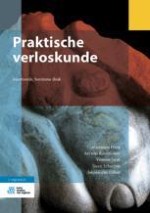2019 | OriginalPaper | Hoofdstuk
7. De ongecompliceerde kraamperiode
Auteurs : Drs. Marianne Prins, Prof. dr. Jos van Roosmalen, Drs. Yvonne Smit, Prof. dr. Sicco Scherjon, Dr. Jeroen van Dillen
Gepubliceerd in: Praktische verloskunde
Uitgeverij: Bohn Stafleu van Loghum
Samenvatting
-
herstel van het lichaam naar de niet-zwangere status;
-
(op gang komen van) de lactatie;
-
aanpassing van de pasgeborene aan het extra-uteriene leven;
-
aanpassing van de ouders aan de nieuwe situatie.
